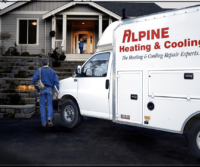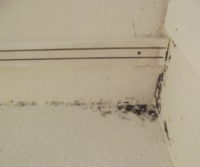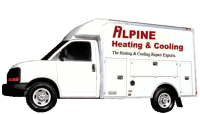
Even with the summer coming to a close in Skagit County, it is never too late to save money on energy through better HVAC operation. Here are a few simple yet important tips that will save you money on your utility bill without the need to sacrifice comfort. For example, one of the easiest ways to enjoy greater levels of efficiency with your HVAC system is to replace an old outdated air conditioning unit with a newer more efficient model.
Eventually Pay For Itself in Energy-Savings
This is especially true if an older unit has not been maintained in the right way. Consider investing in a new model that will greatly improve efficiency and lower energy bills each month. While initial replacement costs may deter your desire to upgrade to a newer system, in the long run the unit will eventually pay for itself through real energy-savings. When considering a new air conditioning unit only choose one that has the Energy Star label. An Energy Star HVAC unit consumes up to 50% less energy than a unit that is not Energy Star compliant.
Skagit County HVAC Services
Equally important is to change AC or furnace filters frequently. Getting into the habit of changing air filters on a monthly basis can ultimately result in more efficient operation and better system performance overall. Air filters that are dirty or clogged can result in a disruption of airflow and even lead to health related problems. Most importantly, dirty air filters force an HVAC system to work harder. This ultimately can result in a unit wearing out much sooner than would otherwise be the case. Another great way of saving energy is to invest in a programmable thermostat.
Today’s Latest Digital Programmable Thermostats
A thermostat that is fully programmable allows you to more effectively control your HVAC system even when not at home. This type of thermostat can be programmed to fit your schedule and improves efficiency ultimately saving money on energy bills. Exact temperatures can be set while targeting specific rooms for temperature control is even possible when using today’s latest digital programmable thermostats. Finally, have your unit inspected annually by a trained professional as a way to detect problems before they become more costly. Contact Alpine Heating and Cooling today to learn more about Burlington Washington HVAC system maintenance and system care services.

Allergens typically cause serious health problems for millions of people each year and frequently result in seasonal allergy conditions. For example, airborne particles such as dust mites and pet dander as well as mold and other particulates can make it difficult to breathe and may result in sneezing and coughing as well as a runny nose and red eyes. The good news is that there are ways to address the issue of allergens in a residential HVAC system.
Using The Right Type of HVAC System Filter
Here are a few ways to properly care for an HVAC system in order to remove allergens and keep air clean and healthy. For example, using the right type of HVAC system filter can make a big difference. In fact, the right type of furnace or AC filter is one of the first lines of defense against poor air quality in most residential homes. When selecting a filter choose one that has at least a MERV 8 rating. This type of filter will in essence be more effective at trapping microscopic particles.
Mt. Vernon Washington HVAC Services
When choosing the right type of filter is combined with the frequent replacement of filters, the end result is cleaner air and better health. Equally important is to remove any debris near the outdoor portion of your HVAC unit. A typical AC system draws air from the outside the home. This air is eventually circulated throughout the home’s interior. As such it is important to keep this area outside clean and free of debris. Regularly inspecting an outdoor unit for surrounding debris can greatly improve efficiency and even lower energy costs. Finally, keeping air-conditioning registers clean is another great way to reduce allergens in your home.
Particulates That Circulate Throughout Your Living Environment
When dusting your home it is important to consider first dusting the returns and registers of your HVAC system. Follow this by dusting the rest of the home as a way to reduce the amount of airborne particulates that circulate throughout the living environment. One of the best ways to dust a home is to make use of the damp rag. This helps to reduce the amount of dust and even dust mites that could be sent airborne by using a dry dust cloth. Contact Alpine Heating and Cooling today for the best in Mount Vernon Washington HVAC system services and care.

Black Mold Has Significant Negative Health Implications
While the term “toxic mold” isn’t exactly accurate, many molds, including so-called “black mold,” (Stachybotrys spp.) produce toxins that negatively impact human health.
According to the Centers for Disease Control:
In 2004 the Institute of Medicine (IOM) found there was sufficient evidence to link indoor exposure to mold with upper respiratory tract symptoms, cough, and wheeze in otherwise healthy people; with asthma symptoms in people with asthma; and with hypersensitivity pneumonitis in individuals susceptible to that immune-mediated condition. The IOM also found limited or suggestive evidence linking indoor mold exposure and respiratory illness in otherwise healthy children.
Molds grow from spores, which are ubiquitous in our indoor and outdoor environments and become active when conditions are right. Persistent moisture is the biggest factor that causes mold to grow and produce more spores and harmful toxins. Since the proliferation of Stachybotrys depends so strongly on moisture, the best place to begin is to figure out where excess moisture in our homes comes from and how we can mitigate its accumulation.
Where Does Problem Moisture Come From?
Any water-using appliance or fixture, especially ones using or producing hot water, are strong sources of indoor moisture.
- Showers (run the fan!)
- Washing machines
- Dishwashers
- Sinks and tubs
- Unvented combustion sources (gas stoves and space heaters, typically)
- Steam irons
Cooking, too, releases moisture into the air, as does human respiration (moisture is expelled from the lungs and through the skin). When you go outside on a cold day and “see your breath,” you are actually seeing the moisture you exhale every time your lungs fill and empty. If you and your whole family are snug in your warm house with the windows and doors shut all winter, you can see how that might become a problem!
The World Health Organization (WHO) identifies eleven common sources of moisture-related issues in buildings (see the entire list here on page 54). A complete discussion of them all is beyond the scope of this article, but we will touch on those related to heating and cooling and how they can be mitigated.
The following are excerpted from that list:
- Plumbing leaks and spills, perhaps resulting from improper design, installation,
operation or maintenance (e.g. failure to inspect and repair plumbing
leaks) - Infiltration of warm, moist outside air through cracks and holes in the enclosure
during warm, humid weather – which can cause condensation on materials
that are cooler, because they are part of the air-conditioning system – have
been cooled by air-conditioned indoor air or are in cool basements or crawl
spaces - Exfiltration of warm, moist indoor air through cracks and holes in the enclosure
during cold weather, which can cause condensation in wall and ceiling
cavities and attic spaces - Intentional or accidental vapor barriers in the wrong place, which can lead to
condensation in the building enclosure - Unvented or poorly vented sources, such as swimming pools, spas, aquariums,
dishwashers, combustion devices, kitchens and baths, from which water
may condense in the building enclosure or, if indoor humidity levels are high
enough, on materials in the space itself (e.g. ceilings, walls, furniture, cold water
pipes or air-conditioning air supply diffusers) - Insufficient dehumidification by HVAC systems,
which may result in levels of interior humidity that are high enough to
cause mould to grow on furniture, walls, ceilings or air-conditioning supply
diffusers - Poor condensate drainage due to heating, ventilation and air-conditioning
system deficiencies; condensation from cooling coils may overflow drain pans
or leak from condensate drain lines
Sources of Excess Moisture Vary by Season
In Skagit county, we have four wonderful seasons. Each is defined by a typical air humidity level and temperature range. Our climate determines how we condition our spaces for both our comfort and health in each season. The winter is typically cold and moist, with temperate summers that can vary from dry to humid depending on the prevailing weather pattern.
Many of the conditions experienced in Skagit county can quickly cause an excess of moisture and mold buildup in the home. Here are some tips to avoid mold buildup.
During (or before!) the heating season:
- Install double pane windows (at minimum) or shrink-wrap plastic indoor window covers
- Ensure sufficient indoor/outdoor (fresh) air changes – run fans, open a window or two, or install an ERV/HRV (energy/heat recovery ventilators)
- Maintain enough heat in the space (minimum temperature) to overcome the condensing effect of unabated drafts and cold air leaks
During the cooling season:
- Use a standalone dehumidifier when indoor humidity exceeds 50%
- Ensure careful insulation and encapsulation of cooling lines where they pass through building materials
- Properly installed and intact (functioning) vapor barrier
- Maintain the temperature in a small range rather than large warming and cooling cycles
- Keep condensate drains clear – make sure condensate goes to a sewer drain or outside and away from the building and foundation
- Use a toilet tank insulator kit or plumb warm water (with a mixing valve) to your toilet tank
All seasons:
- Avoid large swings in indoor temperature that alter the ability of indoor air to hold moisture
- Keep indoor humidity under 50% (use an indoor humidity meter (like this one, under $10) to monitor it
- Make sure that you home has good overall insulation
- Be sure you have a properly designed, installed, and intact vapor barrier
- Insulate all exposed or uninsulated cold water pipes – condensation or freeze (and subsequent leak) risk
I’m Feeling Overwhelmed! Help!
This (partial) list of ways that moisture can build up and contribute to harmful black mold growth can be a bit daunting. Sometimes, I feel the same way when I’m struggling with my computer and it just won’t do what I need it to do! I have found the solution, and I think it will help you, too: call a professional.
Alpine Heating and Cooling is not a mold remediation business, but we can come out and take a look at your heating and air conditioning equipment, which is a common source of moisture problems. We’ll make sure it’s properly installed, functioning at top efficiency, and that drains are clear, and lines are insulated. You’ll be ready for whatever mother nature throws at us here in Skagit county.
Give us call or send us an email – we’d love to hear from you.
For even more reading, check out this fantastic publication from the University of Wisconsin Cooperative Extension called, “Winter Home Moisture Problems.”


